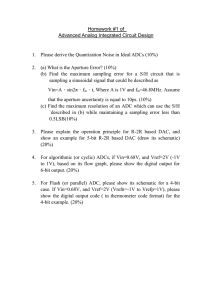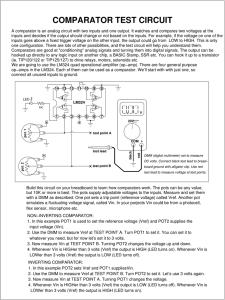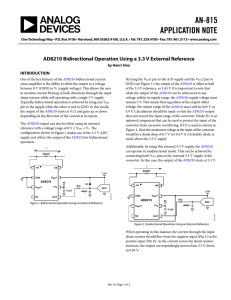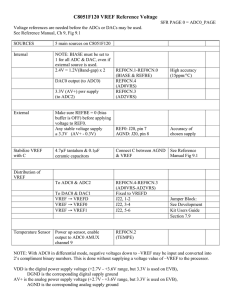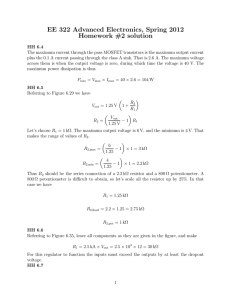Clippers and Clampers Waveshaping circuits are
advertisement
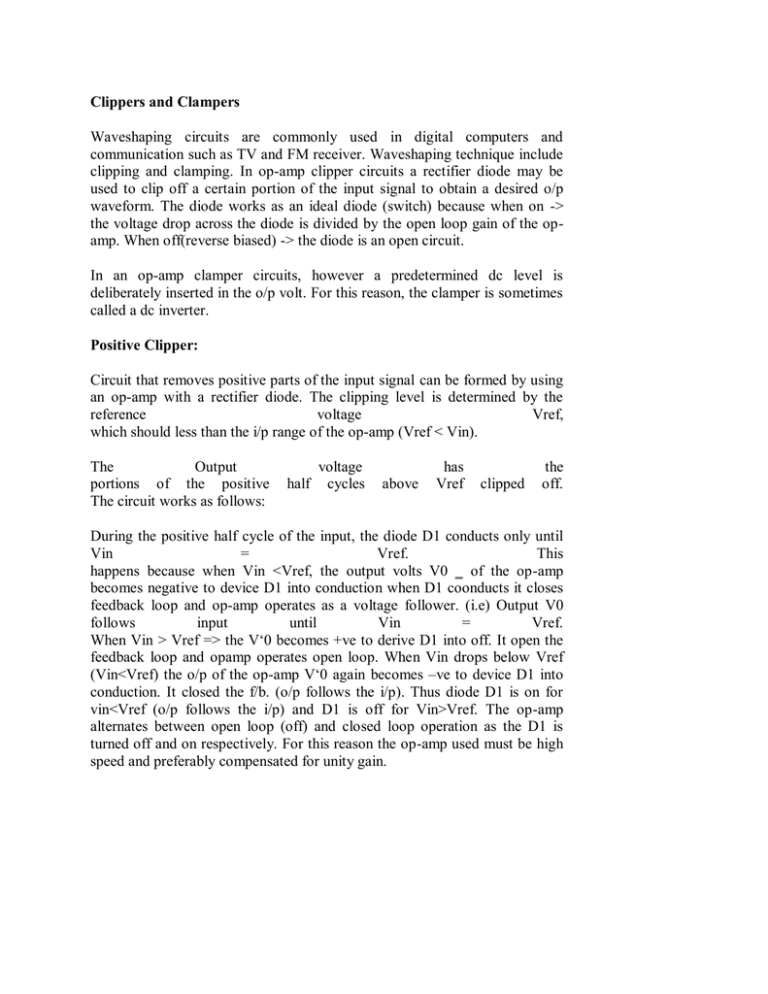
Clippers and Clampers Waveshaping circuits are commonly used in digital computers and communication such as TV and FM receiver. Waveshaping technique include clipping and clamping. In op-amp clipper circuits a rectifier diode may be used to clip off a certain portion of the input signal to obtain a desired o/p waveform. The diode works as an ideal diode (switch) because when on -> the voltage drop across the diode is divided by the open loop gain of the opamp. When off(reverse biased) -> the diode is an open circuit. In an op-amp clamper circuits, however a predetermined dc level is deliberately inserted in the o/p volt. For this reason, the clamper is sometimes called a dc inverter. Positive Clipper: Circuit that removes positive parts of the input signal can be formed by using an op-amp with a rectifier diode. The clipping level is determined by the reference voltage Vref, which should less than the i/p range of the op-amp (Vref < Vin). The Output portions of the positive The circuit works as follows: voltage half cycles above has Vref clipped the off. During the positive half cycle of the input, the diode D1 conducts only until Vin = Vref. This happens because when Vin <Vref, the output volts V0 ‗ of the op-amp becomes negative to device D1 into conduction when D1 coonducts it closes feedback loop and op-amp operates as a voltage follower. (i.e) Output V0 follows input until Vin = Vref. When Vin > Vref => the V‘0 becomes +ve to derive D1 into off. It open the feedback loop and opamp operates open loop. When Vin drops below Vref (Vin<Vref) the o/p of the op-amp V‘0 again becomes –ve to device D1 into conduction. It closed the f/b. (o/p follows the i/p). Thus diode D1 is on for vin<Vref (o/p follows the i/p) and D1 is off for Vin>Vref. The op-amp alternates between open loop (off) and closed loop operation as the D1 is turned off and on respectively. For this reason the op-amp used must be high speed and preferably compensated for unity gain. Ex: for high speed op-amp HA 2500, LM310, μA 318. In addition the difference input voltage (Vid=high) is high during the time when the feedback loop is open (D1 is off) hence an op-amp with a high difference input voltage is necessary to prevent input breakdown. If Rp (pot) is connected to –VEE instead of +Vcc, the ref voltage Vref will be negative (Vref = -ve). This will cause the entire o/p waveform above –Vref to be clipped off. Negative Clipper: The positive clipper is converted into a –ve clipper by simply reversing diode D1 and changing the polarity of Vref voltage. The negative clipper -> clips off the –ve parts of the input signal below the reference voltage. Diode D1 conducts -> when Vin > -Vref and therefore during this period o/p volt V0 follows the i/p volt Vin. The –Ve portion of the output volt below –Vref is clipped off because (D1 is off) Vin<-Vref. If –Vref is changed to –Vref by connecting the potentiometer Rp to the +Vcc, the V0 below +Vref will be clipped off. The diode D1 must be on for Vin > Vref and off for Vin. Positive and Negative Clampers: In clamper circuits a predetermined dc level is added to the output voltage. (or) The output is clamped to a desired dc level. 1. If the clamped dc level is +ve, the clamper is positive clamper 2. If the clamped dc level is –ve, the clamper is negative clamper. Other equivalent terms used for clamper are dc inserter or restorer. Inverting and Non-Inverting that use this technique.
